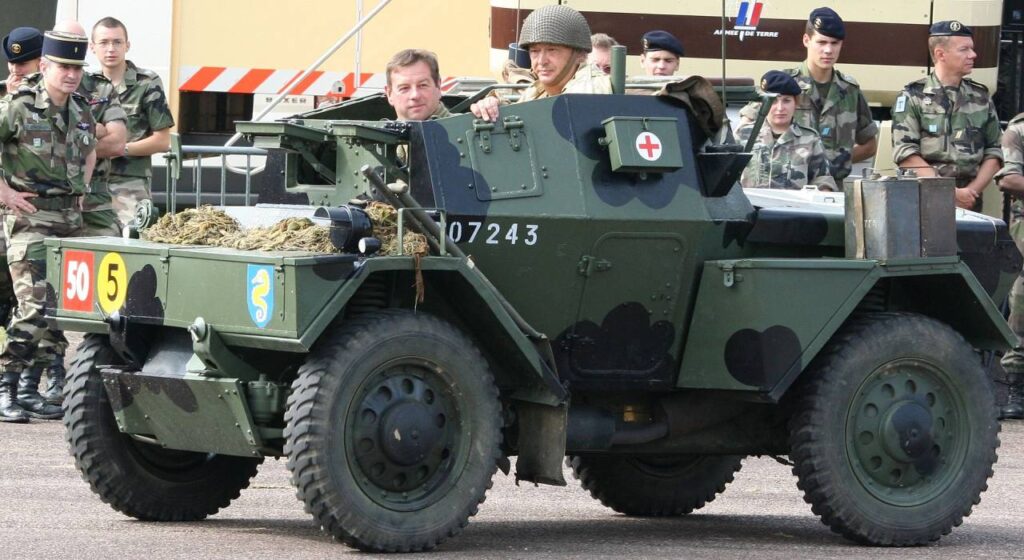
The British armored car Daimler Scout Car, also known as the “Dingo”, many rightly consider one of the best light reconnaissance armored vehicles of the Second World War. Using its chassis, a heavy Daimler Armored Car with cannon armament was also built, which, according to the national classification, was called light wheeleda tank- Light Tank (Wheeled).
Daimler Scout Car (Dingo)
A prototype of a new light reconnaissance armored car, which later became Daimler Scout Car (Dingo), was developed by BSA, which specialized in the production of passenger cars. The company received its first experience back in 1935, when, taking the BSA Scout chassis as a basis, it developed a prototype of a light reconnaissance semi-armored combat vehicle. In some respects, the armored car created by BSA designers did not suit the British military, but the modified four-wheel drive chassis used in it earned very good marks. Three years later, in 1938, the project of a light reconnaissance armored car was completely redesigned when the British Defense Ministry announced a competition for the creation of a light reconnaissance vehicle (Scout Car).
The armored car turned out to be very compact, since the chassis layout and overall layout are preserved from the early BSA model. At the same time, due to a more powerful reservation and some improvements, the dimensions of the armored car increased. Having barely entered the test, the armored car came under the control of Daimler, which BSA joined in 1939. The project was once again refined and in the same year was declared the winner in the competition, the car was immediately adopted by the British army.
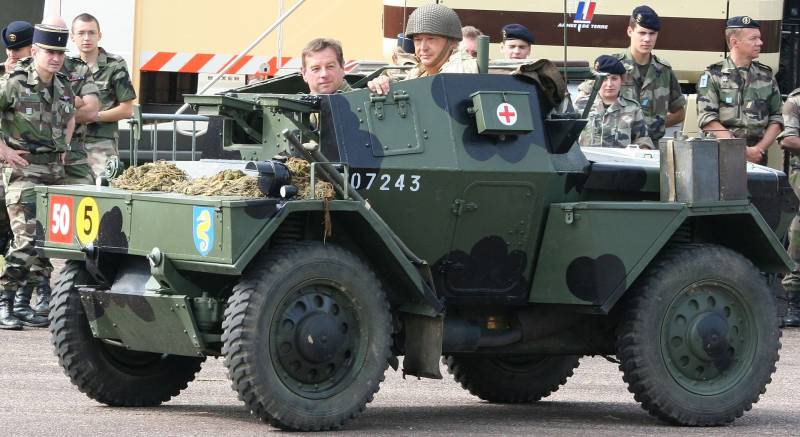
The hull of the Daimler Scout Car Mk.IA serial reconnaissance armored car had a riveted-welded structure, it was assembled from rolled armor plates from 6 to 30 mm in thickness. In its front part there was a command compartment, in the middle part there was a fighting compartment with a hinged roof, in the rear there was a engine compartment. The crew of the combat vehicle consisted of two people: the driver and the commander, who also had to perform the duties of the shooter. The armament of the armored vehicle was light and consisted of only one 7,7-mm Bren machine gun.
The undercarriage of the new combat vehicle was all-wheel drive with the 4X4 wheel formula, used tires of the 7,00-18 size in inches and an independent spring suspension. The distinctive feature of Dingo light reconnaissance armored vehicles was the turning wheels of both bridges. This innovation was not to the liking of all driver mechanics, since the newbies believed that this solution only complicates the process of controlling the combat vehicle. But thanks to this decision, the turning radius of the armored car was the smallest among all British combat vehicles, and, by mobility, the Daimler Scout Car was considered one of the best.
The transmission of a light armored car included a 5-speed gearbox with preliminary gear selection, a transfer case with integrated differential, and hydraulic brakes. As a power plant, the designers used Daimler’s 6-cylinder carburetor engine with a liter 2,5 displacement, which developed the power of the 55 hp. The modification of the Mk.IB armored car that already appeared in 1940 year differed only in a modernized fan in the engine cooling system.
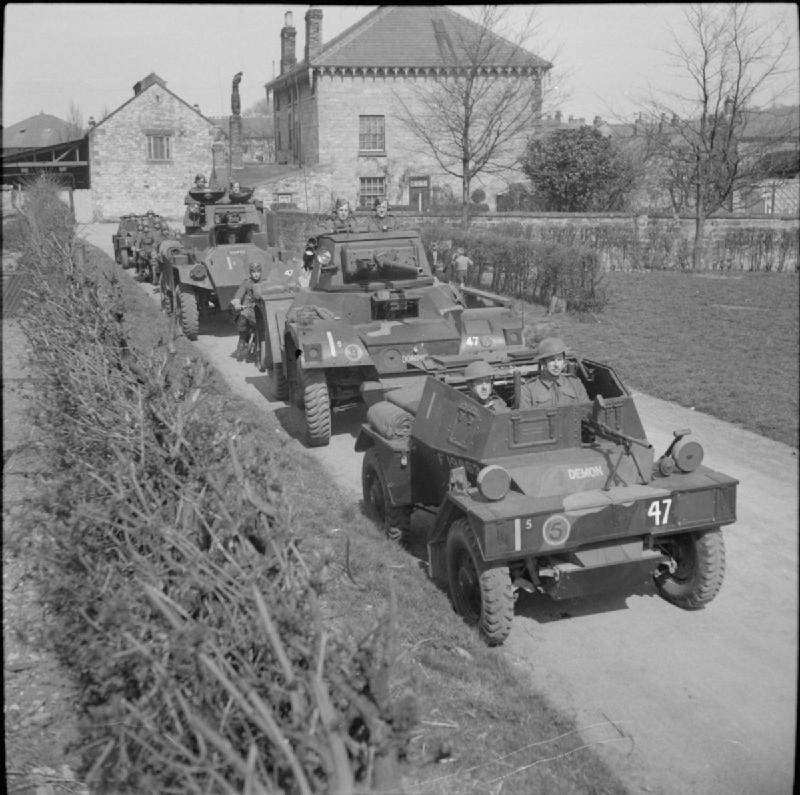
In total, over the years of production from 1939 to 1945, the 6626 lightweight Dingo armored reconnaissance vehicles of all modifications were assembled in the UK:
– Scout Car, Mark I (Scout Car, Daimler Mark I) – basic version with four steerable wheels and a sliding roof of the fighting compartment, in total 52 units were produced;
– Scout Car, Mark IA (Scout Car, Daimler Mark IA) – modification of an armored car with a folding roof;
– Scout Car, Mark IB (Scout Car, Daimler Mark IB) – modification with a modified cooling system, as well as on parts of cars – only the front wheels were controlled;
– Scout Car, Mark II (Scout Car, Daimler Mark II) – the main serial modification, it belonged to the vast majority of armored vehicles produced. It differed from the Mk.IB in the presence on all armored vehicles of control only by the front wheels, as well as a number of minor changes;
– Scout Car, Daimler Mark III – a modification that was put into mass production at the beginning of the 1945 of the year, it was notable for the lack of an armored roof for the crew compartment, as well as for sealing the engine compartment.
The combat career of a light reconnaissance armored car came in the spring of 1940, when 4 armored vehicles arrived in France as part of the 12 of the Northumberland fusilier regiment. Later, on May 17, the expeditionary corps received the 1 tank division, which included the 284 tank, as well as the 30 Dingo armored vehicles. British armored vehicles managed to unleash their combat potential already in those battles, but by the end of 25 in May, the tank forces of the expeditionary corps were completely defeated, and their remnants rolled back to Dunkirk. Here, part of the armor without the fuel and ammunition was left to the enemy due to the impossibility of its evacuation by sea.
Despite the painful defeat, the experience of using Daimler Scout Car in battles was only positive, although it was decided to abandon all the swivel wheels, leaving only the front axle wheels turning. In the future, these intelligence armored vehicles were actively accepted by the British army in all theaters of hostilities. The Italians, who in the 1942 year ordered Lancia to create a similar armored vehicle called Lince, had the greatest impression of their combat use, however, these armored cars were already being built under German control in the Republic of Salo.
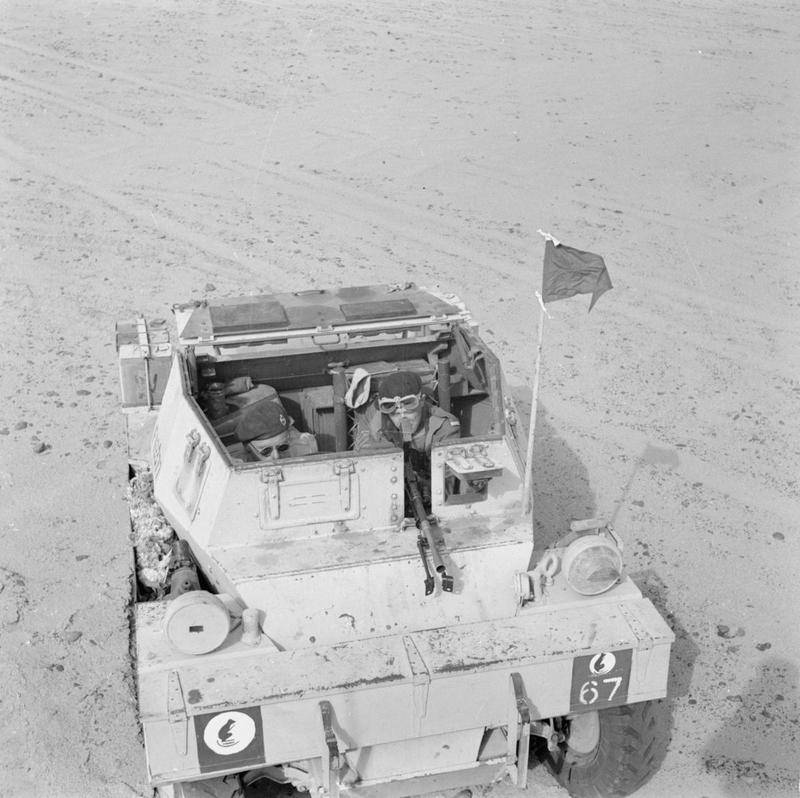
Daimler Scout Car light reconnaissance armored cars were so successful that they continued to be in service with the British army until the 1952 year, until Daimler Ferret armored cars replaced them. At the same time, the armored vehicles decommissioned were actively exported, in the armies of Portugal, Cyprus and Sri Lanka, they served until the middle of the 70s of the last century.
Performance characteristics of Daimler Scout Car (Dingo) Mark II:Overall dimensions: body length – 3170 mm, width – 1710 mm, height – 1500 mm.Combat weight – 3,05 t.Reservations – body front to 30 mm, sides and feed – 9 mm.The power plant – 6-cylinder carburetor engine liquid cooling capacity 55 hpMaximum speed – 90 km / h (on the highway).Power reserve – 320 km (on the highway).Armament – Bren 7,7-mm machine gun.Wheel formula – 4×4.Crew – 2 person.
Daimler Armored Car
Deployed in the UK before the beginning of the Second World War, programs for the modernization of armored forces suddenly began to bring tangible benefits. Already in 1939, the Humber Armored Car and Daimler Armored Car heavy armored cars were sent to the tests, which were then destined to take on all the first war years.
The task of creating a new armored car, capable not only to carry out reconnaissance, but also to fight with enemy light armored vehicles, was received in the same 1939 year. Daimler’s engineers did not intend to reinvent the wheel, so they took as a basis the undercarriage elements of the already existing Daimler Scout Car light armored car, which passed army tests and was put into service, showing very good results. At the same time, the armored hull of the vehicle was designed anew, and the turret with weapons was taken from the Tetrarch tank. It was fully welded and was made of armor plates from 6 to 16 mm thick, which could hardly withstand the shelling of large-caliber bullets. For this reason, the upper frontal armor plates and armor plates, of which the turret superstructure consisted, were located at rational inclination angles, which increased the security of the armored vehicle.
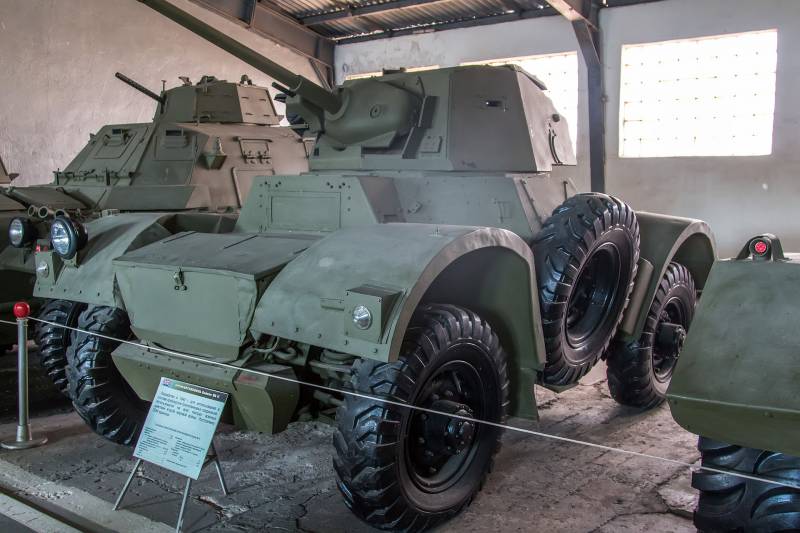
The layout of the heavy armored car was standard. In the front part there was a command compartment, in the middle – a fighting compartment, and in the rear of the hull – the engine compartment. The heart of the armored car was the Daimler 6 27 cylinder carburetor engine, which developed the maximum power of the 95 HP. The undercarriage of the armored vehicle retained its full drive (wheel formula 4×4) and received tires in dimensions 10,5×20 inches. The suspension of the armored car remained individual on the spring springs. The transmission consisted of the following elements: a 5-speed gearbox with a preliminary gear selection, four drive shafts, a reversible transfer case with a simple differential, wheel reduction gears and hydraulic disc brakes.
The armament of a heavy armored car was quite standard by British standards of the time and consisted of an 40-mm QF 2 pounder Mk.IX gun, an 7,92-mm Besa machine gun and one 7,7-mm anti-aircraft machine gun. Since the gun was intended, among other things, to fight against enemy tanks, a special Littlejohn attachment was later attached to it, which made it possible to increase the flight speed of the armor-piercing projectile to 1200 m / s. Ammunition guns consisted of 52 shots, for machine guns there were 2700 and 500 cartridges, respectively. In order not to waste time on the development of the tower when creating an armored car, the developers simply borrowed it from a light assault tank “Tetrarh”, which possessed similar weapons.
The first prototype of an armored car under the designation Daimler Armored Car Mk.I was presented to the military for testing in the fall of 1939 of the year, but almost immediately several major problems of a technical character were revealed. Most of the complaints of the military were caused by the transmission of the combat vehicle, which at that time was almost unchanged from the light reconnaissance armored car Dingo and with difficulty kept more than twice the weight of the combat vehicle. It took about a year to finalize the armored vehicle, and only in 1941, the Daimler Armored Car Mk.I was officially adopted by the British army, after which the armored car was launched into mass production.
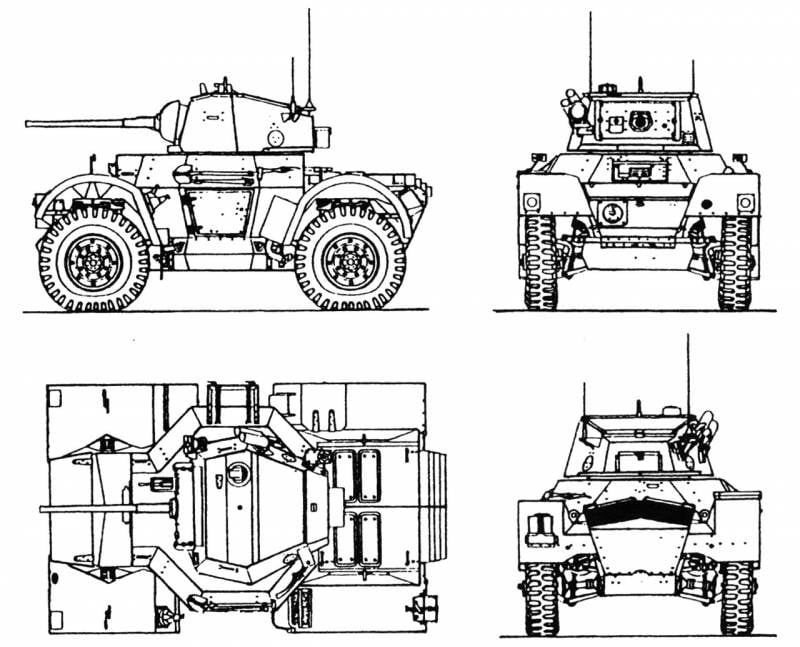
As part of the modernization of the armored car, Daimler’s designers created a variant under the designation Armored Car Mk.ICS, which was armed with an 76,2-mm howitzer. These armored vehicles were collected in a very limited series. Their main purpose was the fire support of infantry on the battlefield. The Daimler Armored Car Mk.II modification that appeared a little later differed only in minor changes in the hull design, which in fact had no effect on the appearance of the combat vehicle. In total, the 1941 heavy cannon armored car Daimler Armored Car of all modifications was assembled in the UK from 1944 to 2694 year.
The first new armored car received the regiments of the British army who fought in Libya and Tunisia. In North Africa, these armored vehicles have been actively used by the British army since July 1942. By taking part in the final battles on this theater of operations, armored cars earned high marks from their crews and were later actively used by the British throughout World War II on all fronts. So they were actively used in battles on the Apennine Peninsula in the 1943-1945 years, as well as in Southeast Asia. In addition, the 10 armored vehicles were transferred to the 1940 of the Belgian armored squadron in May 1, which was sent to France and took part in the battles, including the liberation of Belgium. After the war, the remaining armored vehicles continued to serve in the ranks of the Belgian army.
After the end of the Second World War, Daimler Armored Car heavy armored cars remained in service with the British army for a long time. The last armored vehicles of this type, which were exploited mainly in the colonies, were written off only in the 1965 year.
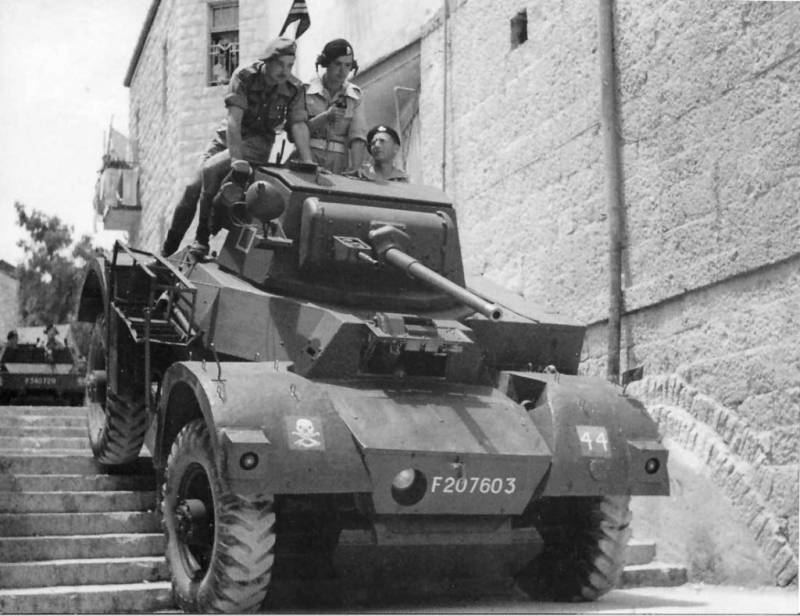
Performance characteristics of Daimler Armored Car:Overall dimensions: body length – 3965 mm, width – 2440 mm, height – 2235 mm, clearance – 406 mm.Combat weight – 7,62 t.Reservations – from 16 mm (front of the hull) to 6 mm (bottom).The power plant is a Daimler 6 27 95 X-cylinder liquid-cooled carburetor engine.Maximum speed – 80 km / h (on the highway).Power reserve – 330 km (on the highway).Armament – 40-mm gun QF 2 pounder Mk.IX and 7,92-mm machine gun Besa, on the part of machines 7,7-mm Bren anti-aircraft machine gun was additionally installed.Ammunition – 52 shot to the gun and 3200 cartridges for machine guns.Wheel formula – 4×4.Crew – 3 person.